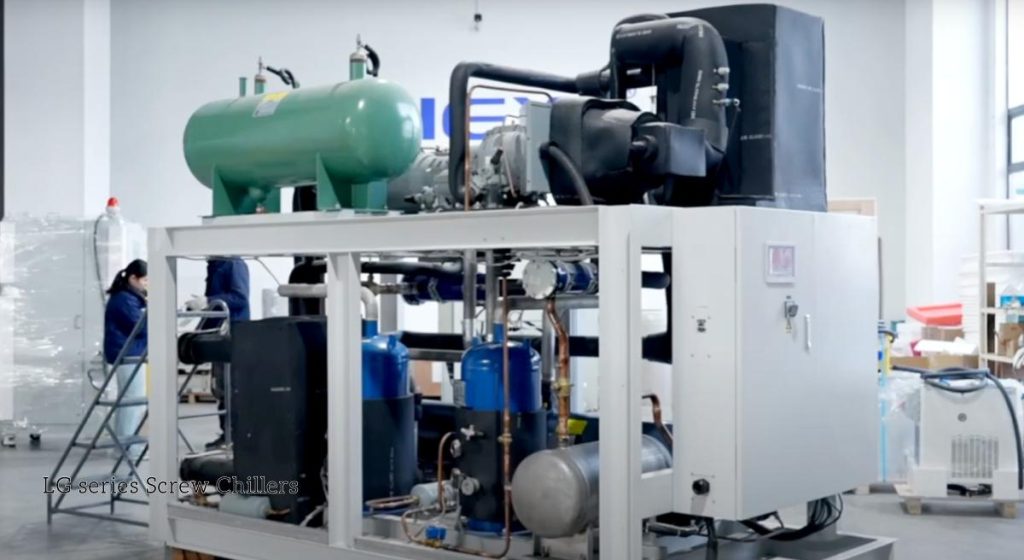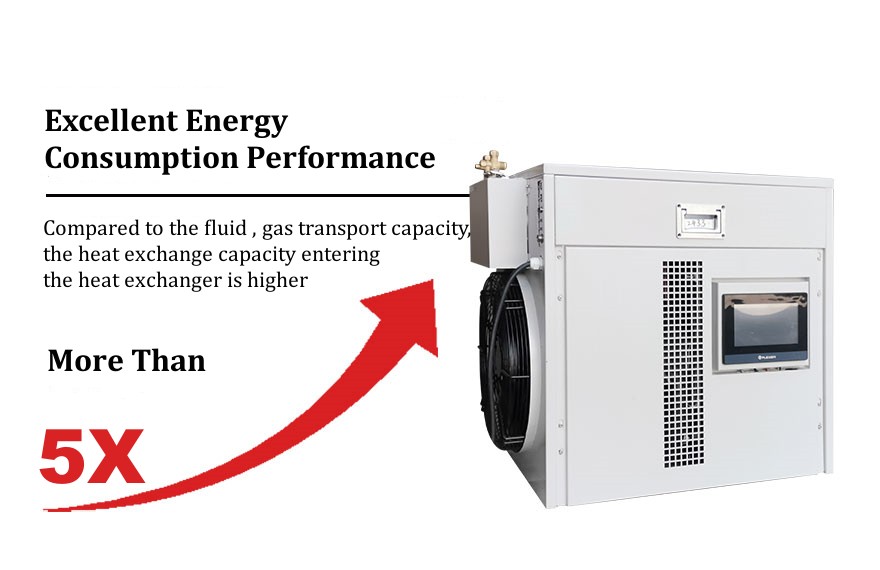Chiller Low Pressure Alarm:5 Common Reasons and Solutions
Low pressure alarms happen a lot in Kältemaschinen, and knowing why they pop up can save you a lot of headaches. Usually, it means the suction pressure has fallen below the set limit. If you don’t deal with it, the system can run less efficiently, compressors take more wear, and you might even face unexpected downtime. Here, we’ll go over five common reasons these alarms happen and what you can do to fix them.
Related:chiller troubleshooting
1. Refrigerant Leak
Low pressure alarms and low return air pressure are often caused by refrigerant leaks. When the chiller runs and the return air pressure falls below the preset alarm value, the alarm triggers. At rest, the system pressure normally stays around 1.0 MPa (1000 kPa).
If it reads below 0.6 MPa, a leak may be present. To confirm, let the chiller reach normal temperature, wait for a while, and then check the pressure readings. Use the pressure gauge needle or, for systems with sensors, access the temperature control interface to view compressor suction and discharge pressures.
2. Electrical or Sensor Fault
If the chiller issues an alarm immediately after powering on, the cause may be electrical. Devices with circuit board control can show false alarms due to pressure sensor failure, circuit board issues, open circuits, loose connections, or short circuits.
3. Expansionsventil or System Blockage
Improper expansion valve adjustment or a blockage in the refrigeration system can cause the suction pressure to drop steadily during operation. The alarm triggers once the pressure hits the set limit. If static pressure is normal at rest but the alarm appears after some running time, this is often the cause.

Entdecken Sie hocheffiziente und energiesparende Chiller-Lösungen!
4. Cooling Medium Issue
Using the wrong cooling medium or operating at too low temperatures can slow Kältemittel flow. For example, a frozen evaporator plate reduces suction pressure gradually, which may trigger the alarm. Ensuring the correct medium and operating range can prevent this issue.
5. Sensor Settings or Calibration
On newer chillers with electromagnetic pressure sensors, alarms can go off even when nothing’s really wrong if the suction pressure setting is off. A bad sensor or a mis-set range can give wrong readings, making it look like the pressure is too high or too low. The best way to avoid these false alarms is to check your sensors regularly and make sure they’re calibrated correctly.
Schlussfolgerung
A low pressure alarm is the chiller telling you to check something. Sometimes it is a real problem like a leak or blockage. Other times it is settings or sensors. Knowing the main causes helps you troubleshoot faster and keep the cooling system running smoothly.
Need help with chiller pressure issues or maintenance? Looking for the right temperature control system for your new project? Reach out to LNEYA’s technical team for advice and support.

- Temperature Control in Photolithography
- Is a Used Chiller a Good Idea
- Chiller Components and Refrigeration Fundamentals Guides
- Chiller Types and Selection Guides
- Dezember 2025
- November 2025
- Oktober 2025
- September 2025
- August 2025
- Juli 2025
- Juni 2025
- Mai 2025
- März 2025
- Februar 2025
- Januar 2025
- Dezember 2024
- November 2024
- Oktober 2024
- September 2024
- August 2024
- Juli 2024
- Juni 2024
- Mai 2024
- April 2024
- März 2024
- Februar 2024
- September 2023
- Juli 2023
- Juni 2023
- Mai 2023
- Januar 2023
luftgekühlte Kältemaschine Kühler Wartung von Kühlanlagen Kältemaschinen Kalte Montage Gefrierschrank Kaltwassersatz dynamisches Temperaturkontrollsystem energieeffizienter Chiller Heizungsumwälzpumpe Industriekühler Industriekälteanlagen Industriekühlung industrieller Gefrierschrank Industriekühlschrank Mantelreaktor Laborkühlschrank Niedertemperaturkühler Nachrichten Prozesskühler process cooling Reaktorkühlung Reaktorheizung Kühlung Kältethermostat Schneckenkühler Halbleiter-Kühlgerät Halbleiter-Testkühler sundi tcu Temperaturkontrolle Prüfkammer Thermostat Ultra-Niedertemperatur-Kühler Fahrzeug-Test-Kühler Kaltwassersatz wassergekühlte Kältemaschine
Verwandte Chiller
KONTAKT US
TEL:
EMAIL:
WeChat & WhatsApp:

Wechat QR

Haben Sie eine Frage oder benötigen Sie ein Angebot? Füllen Sie das untenstehende Formular aus, und unser Team wird sich innerhalb von 24 Stunden bei Ihnen melden.
 LNEYA Industriekühler Hersteller Lieferant
LNEYA Industriekühler Hersteller Lieferant
















